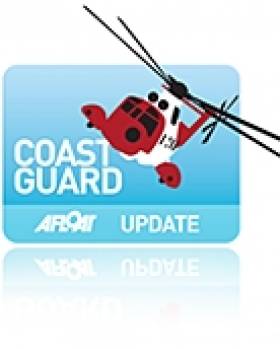Displaying items by tag: Rhyl Flats Offshore Wind Farm
Coastguard to Carry Out Irish Sea Windfarm Exercise
The UK's Maritime & Coastguard Agency in conjunction with RWE npower renewables, the RNLI and RAF Search and Rescue, are due to exercise communications, co-ordination and response to a series of mock-maritime incidents in and around the wind turbines at the North Hoyle and Rhyl Flats Offshore Wind Farms on the Irish Sea.
Rhyl Flats Offshore Wind Farm is a 25 turbine wind farm approximately 8 km north east of Llandudno in North Wales. It is Wales' second offshore wind farm and the third offshore wind farm to be built within Liverpool Bay. It has a maximum rated output of 90 MW.
The Exercise is due to take place on Sunday 5th September.
The exercise will be coordinated by Holyhead Coastguard, and involves multiple agencies, including the North Hoyle and Rhyl Flats wind farm operators, maintenance teams and a number of service vessels.
Jim Paton, Rescue Co-ordination Centre manager at Holyhead Coastguard said:
"We are very keen to practise various elements of a search and rescue within a wind farm and to test rescue and evacuation procedures for 'walking wounded' from intermediate and lower platforms of a wind farm tower. With colleagues in the RNLI we will exercise the appointment of the Rhyl RNLI all weather lifeboat as on scene co-ordinator to search the surface sea area for missing people with multiple search units employed.
"We want to be able to test procedures for the rescue and evacuation of persons from a turbine nacelle and with the RAF, test a helicopter evacuation of a casualty from the nacelle of a wind turbine. We will also be exercising winching procedures within a wind farm complex using lifeboats, a helicopter and a wind farm service vessel all working with each other. We expect the exercise to take about four (4) hours from midday to 4.00 pm."
The exercise will begin with Holyhead Coastguard receiving a call reporting a 4x4 vehicle and trailer parked in Rhyl overnight. The first informant will also explain that he had seen two people from this vehicle launching a small boat from the slipway opposite at around 8.00 pm the previous evening, and who haven't been seen since. Additionally the Coastguard will hear about the need for an individual to be airlifted from somewhere within the North Hoyle offshore wind farm .
Jim Paton continued
"As wind farms become larger and more involved; an emergency service such as the Coastguard must be fully aware of the challenges of search and rescue within such complexes when the weather and sea conditions at the time of the incident may be extremely hostile."





























































